| Nov 30, 2021 | |
How nanotechnology can benefit smart cities |
|
| (Nanowerk Spotlight) A smart city is an infrastructure framework that addresses the growing urbanization challenges by embracing integrated and automated information and communication technologies to help optimize all city operations, help achieve sustainability goals and better quality of life for its citizens (read our primer on smart cities). | |
| Generally, the development of smart cities requires more efficient and less polluting transport systems, more habitable residential buildings that require less energy to operate, establishment of better managed public services of all kinds (gas, water, electricity, waste disposal, etc.). | |
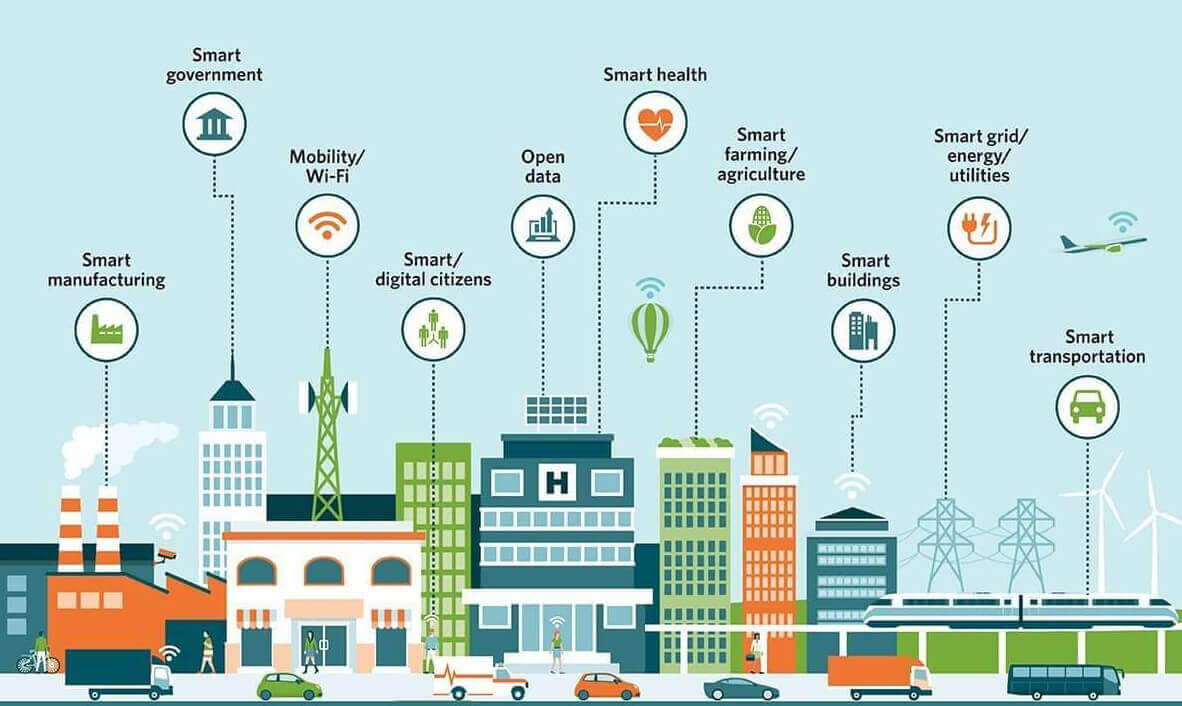
|
|
| Components of a smart city. (Source: TechTarget) | |
| Working towards this goal involves developing and using technologies on several fronts. Some of the challenges are: | |
|
|
|
| Just going through this list it becomes clear that the development of smart cities is linked to the development of new materials and devices, the use of sensor networks, the handling of huge amounts of data ('Big Data'), the development of communication networks between objects, decision-making ('Artificial Intelligence'), data security and decentralization ('blockchain'), and a range of other smart technologies. This leads to and integrates with new concepts such as Smart Roads and Smart Factories. | |
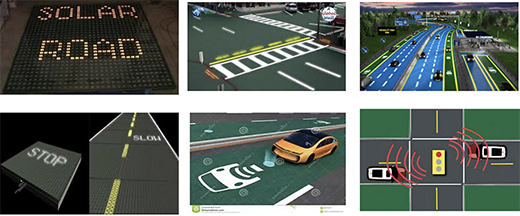
|
|
| Future smart transport in smart cities is about intelligent vehicles, signs and roads. (Image: University of Zaragoza) | |
| When it comes to nanotechnology and the development of new nanomaterials and nano devices that smart cities can benefit from, there are several areas that immediately stand out: | |
|
|
|
| Let's take a look at some of the major nanotechnologies at play: | |
5G Networks |
|
| By providing higher data rates, increased traffic capacity, ultra-low latency, and high connection density, 5G offers opportunities for urban innovators striving to create smart city services. | |
| In conjunction with the Internet of Things (IoT) and crowd management tools, 5G should enable transport operators to improve their response to overcrowding and deliver information to passengers on safer routes and vehicles. | |
| It is estimated that, by 2030, the world will see an Internet-of-Things with over 75 billion connected devices, most of which will require 5G. | |
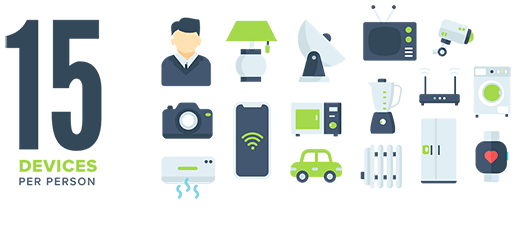
|
|
| (Source: reply.com) | |
| Researchers have demonstrated how properties of graphene enable ultra-wide bandwidth communications coupled with low power consumption to radically change the way data is transmitted across the optical communications systems. This could make graphene-integrated devices the key ingredient in the evolution of 5G and the IoT. | |
| Already, researchers have demonstrated wafer-scale production of graphene-based photonic devices, enabling automation and paving the way to large scale production. | |
| There are already plans to use the sub-terahertz range as a working range in the sixth generation (6G) wireless technology, which is being prepared for active introduction in our lives from the early 2030s. Researchers have already developed magnetic nanopowders to be used in 6G reception devices. | |
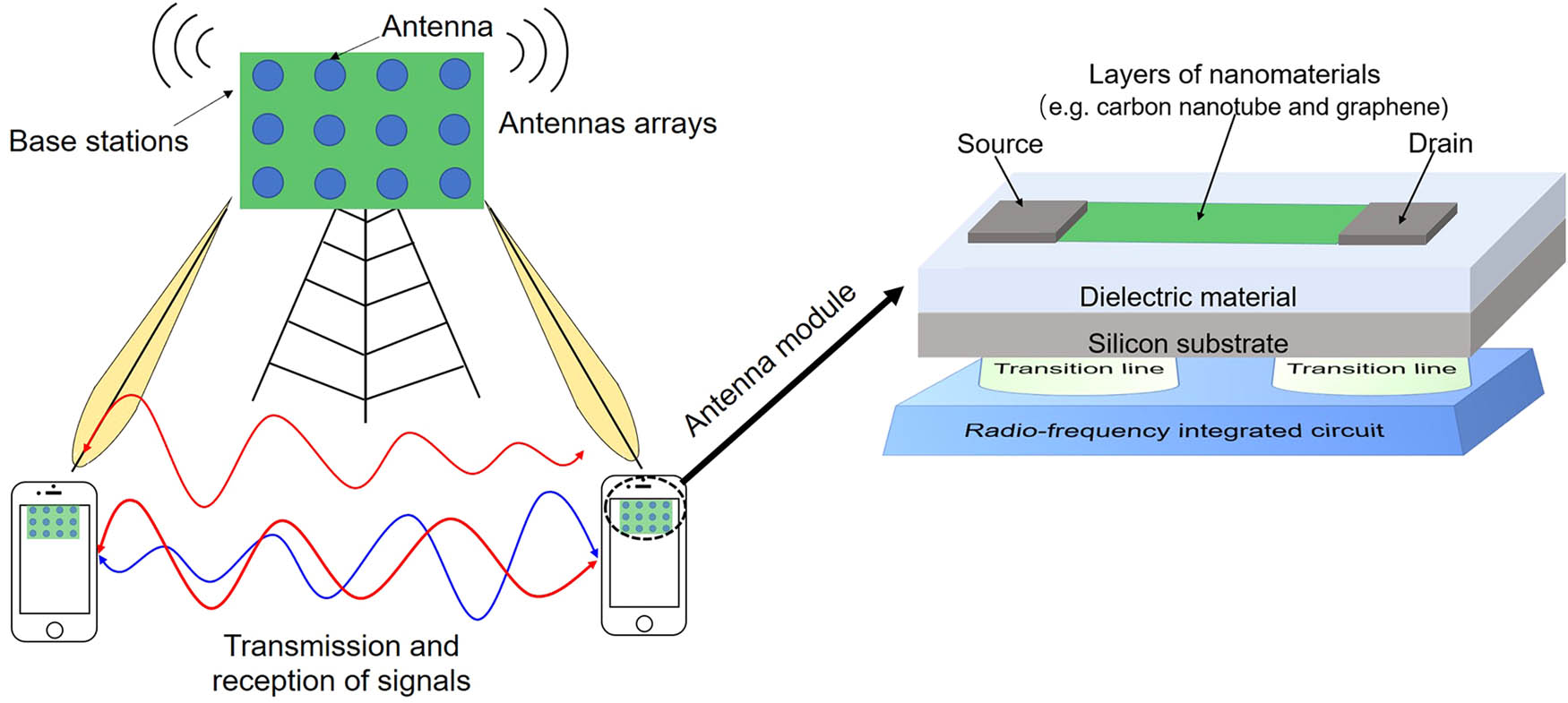
|
|
| The use of nanomaterials in the technological development for the 5G wireless communications. (Source: DeGruyter, doi:10.1515/ntrev-2020-0054) | |
Nanotechnology-enabled sensor technology |
|
| Data-collecting sensors embedded in all kinds of devices are at the core of IoT applications. Especially in demand are light-weight, thin, robust, and flexible sensors that can be seamlessly integrated onto any surface, which is difficult to realize in conventional electromechanical sensors. | |
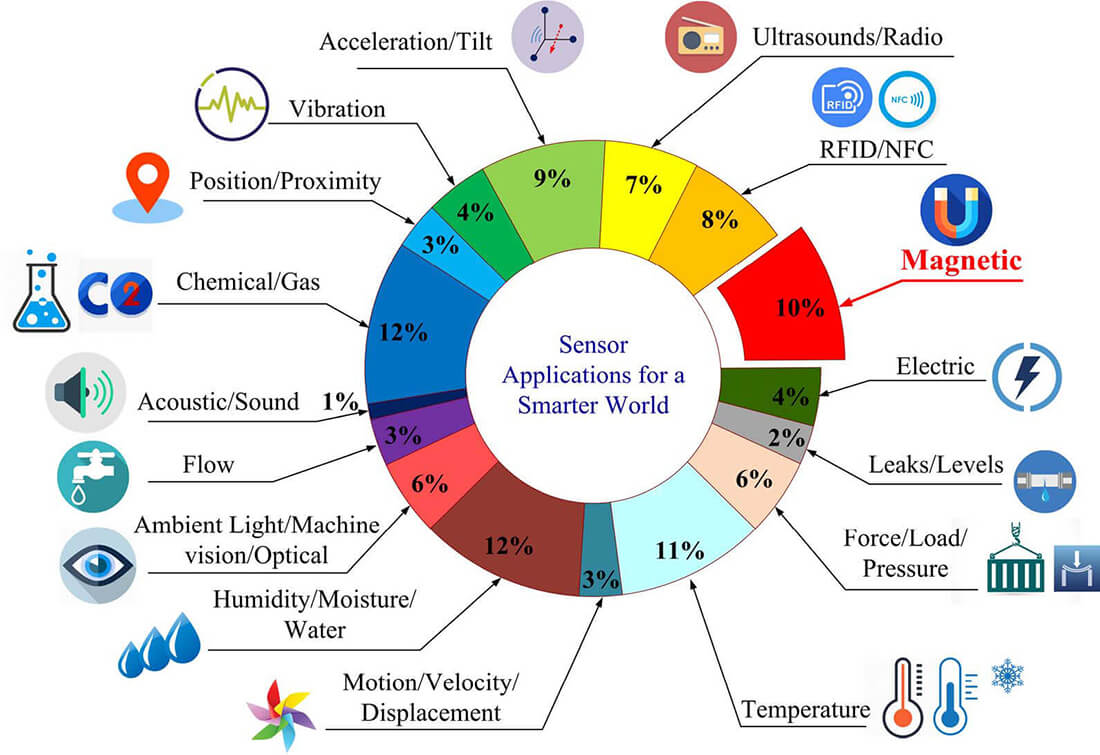
|
|
| Common sensor categories in IoT applications. (Source: IEEE Transactions on Magnetics, 55(11), pp.1-22) | |
| Wireless sensors, whether electronic or photonic (light-based), can monitor such environmental factors as humidity, temperature and air pressure. One example of IoT-suitable sensing devices are fully integrated and packaged wireless sensors for environmental monitoring applications that can be 3S printed. | |
| Another example are graphene sensors embedded into RFIDs for wireless humidity sensing: By layering graphene oxide (a derivative of graphene) over graphene to create a flexible heterostructure the team have developed humidity sensors for remote sensing with the ability to connect to any wireless network. | |
| Still a bit in the future is smart dust – imagine a cloud of sensors, each the size of a grain of sand or even smaller, blown aloft by hurricane winds and relaying data on the storm to weather stations below. Picture an invisible sensor network embedded into a smart city???s roads to monitor traffic, road surface damage and identify available parking spaces – all in real time. Or billions of nanosensors distributed over areas with fire hazards to detect a fire at its very beginning. Or envision programmable smart dust that triggers an alarm signal when invisible microcracks are detected in a turbine blade. | |
| Already, advances in nanoelectronics and nanoelectronic chiplets have reduced the footprint of smart dust quite a bit (read more: 'Solar-powered smart dust'). | |
Nanomaterials to be used in building construction |
|
| Nanotechnology has a significant impact in the construction sector. Several applications have been developed for this specific sector to improve the durability and enhanced performance of construction components, energy efficiency and safety of the buildings, facilitating the ease of maintenance and to provide increased living comfort. | |
| "Nanoparticles of TiO2, Al2O3 or ZnO are applied as a final coating on construction ceramics to bring this characteristic to the surfaces. TiO2 is being used for its ability to break down dirt or pollution when exposed to UV light and then allow it to be washed off by rainwater on surfaces like tiles, glass and sanitary ware. ZnO is used to have UV resistance in both coatings and paints. Nanosized Al2O3 particles are used to make surfaces scratch resistant. These surfaces also prevent / decelerate formation of bad smells, fungus and mould. | |

|
|
| The Jubilee Church in Rome, built with photocatalytically active, self-cleaning concrete made by the company Italcementi. (Source: quartiermagazin.com) | |
| "Basic construction materials cement, concrete and steel will also benefit from nanotechnology. Addition of nanoparticles will lead to stronger, more durable, self-healing, air purifying, fire resistant, easy to clean and quick compacting concrete. Some of the nanoparticles that could be used for these features are nano silica (silica fume), nanostructured metals, carbon nanotubes (CNTs) and carbon nanofibers (CNFs). | |
| A bit more futuristic: With the addition of engineered nanomaterials that change the crystalline structure of concrete, imaginative architectural designs become possible and buildings achieve new heights and forms. Steel reinforcements are a thing of the past as concrete structures have ample strength to support themselves, in shapes that make the Guggenheim Museum look tame. Engineered from the strongest, lightest nanomaterials, suspension bridges and other weight-bearing elements look more like spider webs than structures. | |
| Already, researchers have demonstrated strengthening of concrete by infusing it with nanocrystals or by nanoengineering concrete with graphene, resulting in a new composite material that is more than twice as strong and four times more water resistant than existing concretes. | |
Photovoltaic materials |
|
| Imagine: A wide range of photovoltaic materials based on molecular, organic, polymeric, dye-sensitized, and colloidal quantum dot-based solar cells cover horizontal and vertical building surfaces. Enhanced by multifunctional nanoscale designs, they capture light and convert it into electric power for buildings and the urban infrastructure. At night, they re-emit visible light for their buildings and surroundings. | |
| It isn't cars and vehicle traffic that produce the greatest volumes of climate gas emissions – it's our own homes. Nanotechnology is bound to put an end to all that. The building sector is currently responsible for 40% of global energy use and climate gas emissions. | |
| In the future, however, we will start to see construction materials and high-tech systems integrated into building shells that are specifically designed to remedy this situation. Such systems will be intelligent and multifunctional. They will consume less energy and generate lower levels of harmful climate gas emissions. | |
| For instance, insulation materials made from nanospheres will allow to reduce existing insulation material thicknesses. While standard insulation materials such as mineral wools have conductivities in the region of 35 milliwatts per meter, nanospheres may exhibit values as low as about 20 mW/m. This is lower than the thermal conductivity of air. | |
| Solar cells installed in panels fixed to our roofs and walls will be a thing of the past. Instead, they will be integrated into the roof tiles and external wall paneling materials with cheap thin-film solar cells. This will save on building materials and construction costs, and will reduce electricity bills. | |
| Of the estimated 75 billion IoT devices that will be installed by 2025, a majority will be located indoors. Broad installation of such IoT devices requires the devices to become autonomous, meaning that they should no longer need batteries or a grid connection to operate. To achieve this, it is crucial to identify a local low-maintenance energy source that can provide local power to IoT devices, especially in ambient conditions. | |
| To this end, researchers have developed new indoor photovoltaic cells that can convert up to 34 per cent of visible light into electricity to power a wide range of IoT sensors. | |
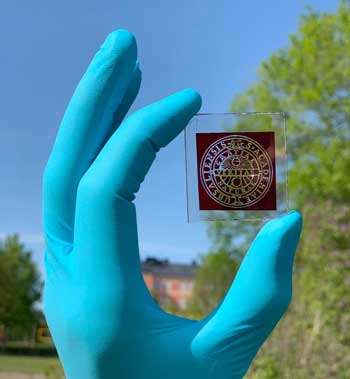
|
|
| The dye combination for the new solar cells was designed specifically to absorb light at visible wavelengths. (Image: Uppsala University) | |
Widespread use of engineered nanomaterials in the Smart City |
|
| Engineered nanomaterials are expected to be widely used in city environments. Carbon dioxide and other air pollutants are reduced as power plants, buildings, and vehicles use nanostructured membranes. Recycled water is purified with nano-enabled filtration and osmosis systems, for instance by using nanofiltration membranes to treat industrial wastewater from heavy metals, and these systems are available for individual households and new local urban water treatment systems. | |
| For instance, graphene excels at removing contaminants from water and researchers already demonstrated the use of 3D-printed graphene aerogels for water treatment. | |
| As the above examples make abundantly clear, nanotechnology-enabled materials and devices will play a major role in sectors such as electronics, communications, construction, and energy; all of which are key areas for the implementation of smart cities. | |
 By
Michael
Berger
– Michael is author of three books by the Royal Society of Chemistry:
Nano-Society: Pushing the Boundaries of Technology,
Nanotechnology: The Future is Tiny, and
Nanoengineering: The Skills and Tools Making Technology Invisible
Copyright ©
Nanowerk LLC
By
Michael
Berger
– Michael is author of three books by the Royal Society of Chemistry:
Nano-Society: Pushing the Boundaries of Technology,
Nanotechnology: The Future is Tiny, and
Nanoengineering: The Skills and Tools Making Technology Invisible
Copyright ©
Nanowerk LLC
Check out our SmartWorlder section to read more about smart technologies.
|
|
|
Become a Spotlight guest author! Join our large and growing group of guest contributors. Have you just published a scientific paper or have other exciting developments to share with the nanotechnology community? Here is how to publish on nanowerk.com. |
|

